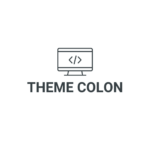In the digital age, a company’s online presence isn’t just important – it’s essential. Enter agency web design, a specialized field that’s taking center stage in the business world. This practice involves creating visually appealing, functional, and user-friendly websites that reflect a company’s brand and values.
Whether you’re a small business owner looking to revamp your site, or a big corporation seeking to streamline your online operations, agency web design can be a game-changer. Let’s delve into the world of agency web design, exploring its benefits, key principles, and how it can elevate your business in today’s competitive market.
Agency Web Design

Dipping into the world of agency web design, it’s crucial to grasp its components, its purpose, and how it sets itself apart from other forms of web design.
Agency web design encompasses the work done by a specialized team within a digital agency, focused on creating, redesigning, or maintaining websites for businesses. Streamlining everything from the website’s aesthetics to its functionality, agencies are experts in the art of crafting digital experiences. Their teams are composed of skilled professionals in various areas, such as design, programming, and copywriting, who collaborate to create cohesive, brand-aligned digital experiences. An example to understand this better: An e-commerce business might hire an agency to build a conversion-focused and user-friendly website that effectively showcases their products.
Key Elements of Effective Agency Web Design

Agency web design hinges on essential elements. These elements amplify the effectiveness of a website, rendering it more appealing and user-friendly.
User Experience (UX) embodies a paramount element in effective agency web design. It focuses on generating an easy, efficient, and satisfying interaction between the user and the website. A well-designed UX involves clear navigation, meaningful content, and swift loading times. For example, a website with an intuitive navigation menu, high-quality images, and concise text ensures that users can easily find the information they seek.
Visual Harmony and Aesthetics
Visual harmony and aesthetics play a crucial role in an agency’s web design. They fabricate a balanced and appealing web environment. This involves the strategic use of colors, typography, images, and layout. A website with a clean, coherent design using complementary color schemes and easy-to-read fonts, for instance, enhance visual harmony and aesthetics.
Mobile Compatibility and Responsiveness
In today’s digital age, a website’s mobile compatibility and responsiveness are essential. More people view websites on mobile devices than on desktop computers. Hence, an effective agency web design ensures that the website adapts to different screen sizes without compromising its functionality or aesthetics. For instance, a website with a responsive design will adjust its layout when viewed on a mobile device, ensuring users have the same high-quality experience as on a desktop.
The Process of Agency Web Design

This section dives deeper into the agency web design process, a crucial behind-the-scenes mechanism to fabricate brand-aligned websites.
In agency web design, the first step typically involves an initial consultation. Here, the design team connects with the client, understanding their brand’s values, mission, customer base, and goals. This stage sets the foundation of the design strategy, tailoring it specifically for the brand. Influential agencies bring extensive market research into the mix, assessing competitors and identifying prevalent trends. Their strategic minds develop an initial blueprint, with a central focus on bringing enhanced user experiences, visual harmony, and significant aesthetics that resonate with both the brand and its audience.
Design and Development Phases
Post-strategic planning, the agency transitions into the meatier design and development stages. Designers merge creativity with technical skills, creating visually appealing layouts that ensure website functionality. They incorporate mobile compatibility and responsiveness, as noted in the preceding section. This phase ensures the website’s structure, information flow, and visual elements align with the UX principles and brand identity defined earlier. The development stage, on the other hand, breathes life into the design. Developers program, code, and troubleshoot to convert the design into a functioning website. Integration with different platforms or systems also occurs during this phase.

